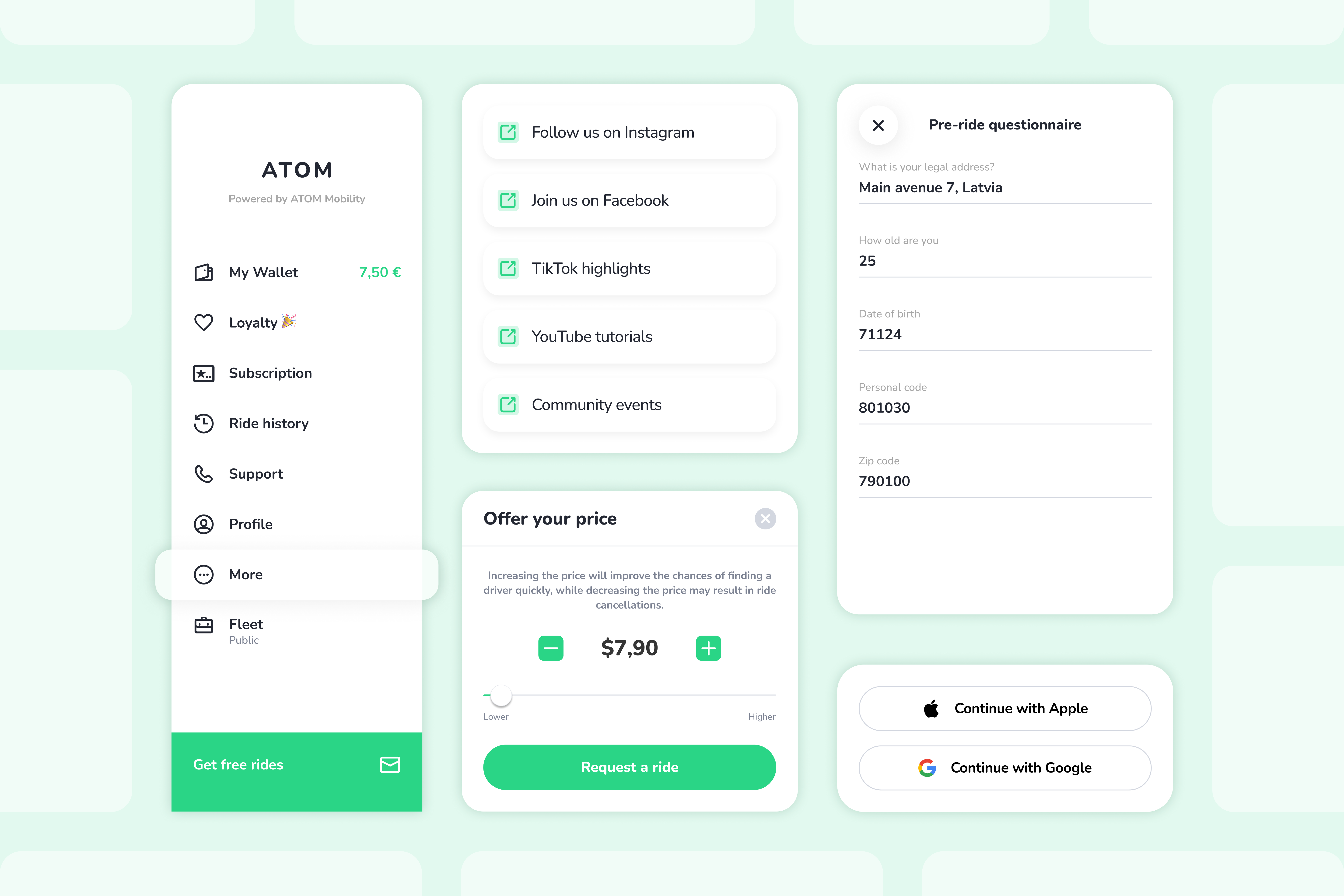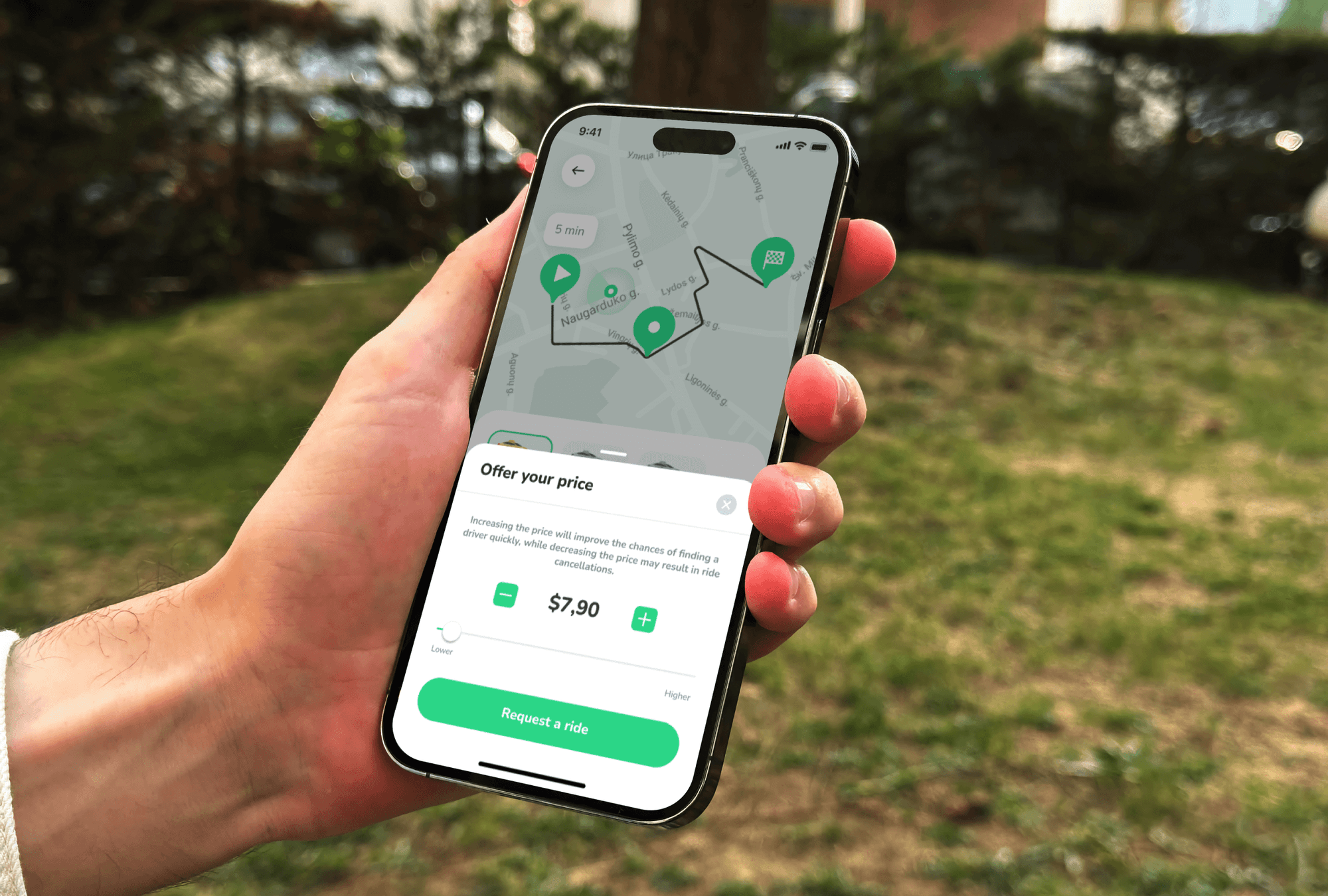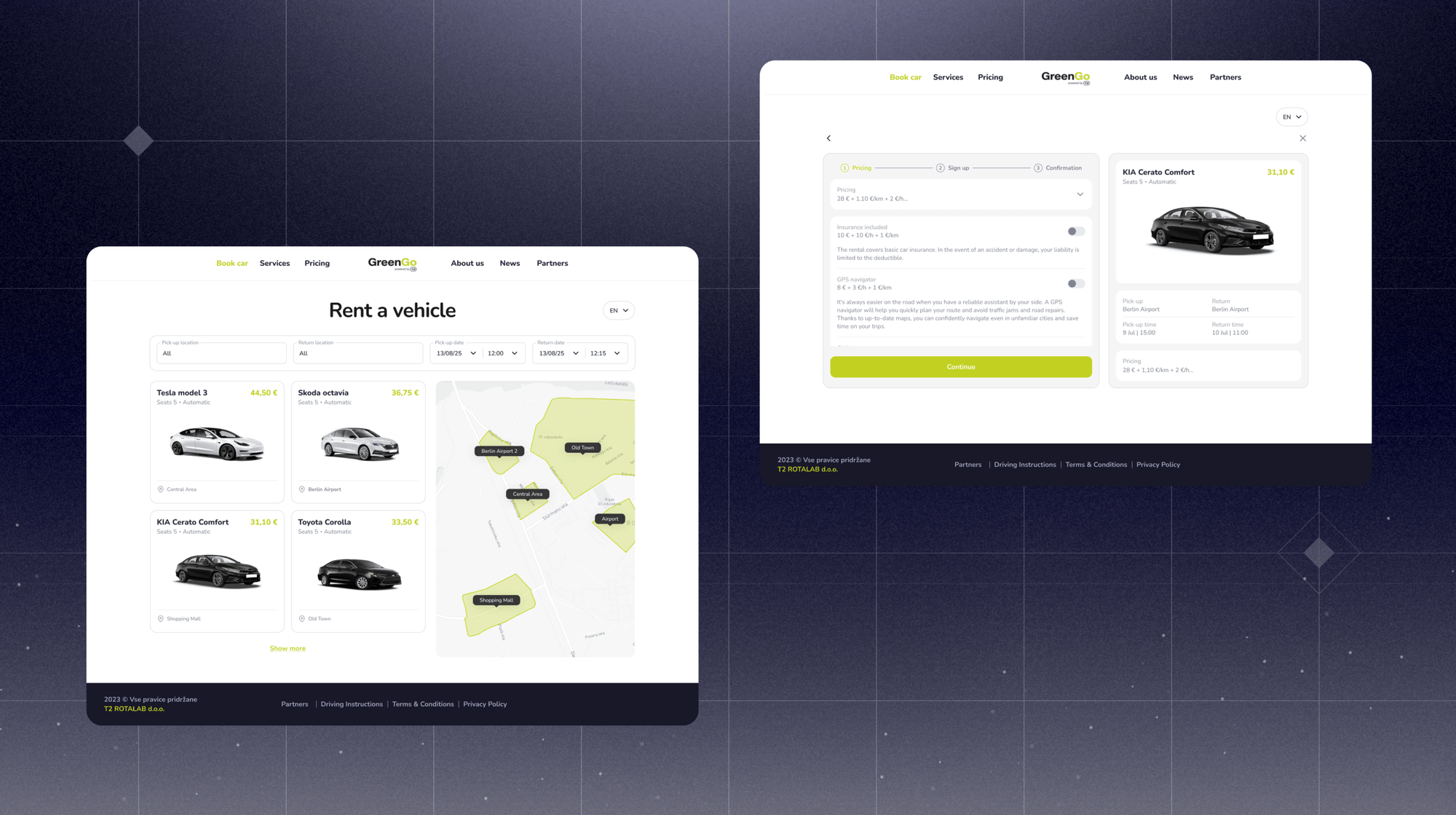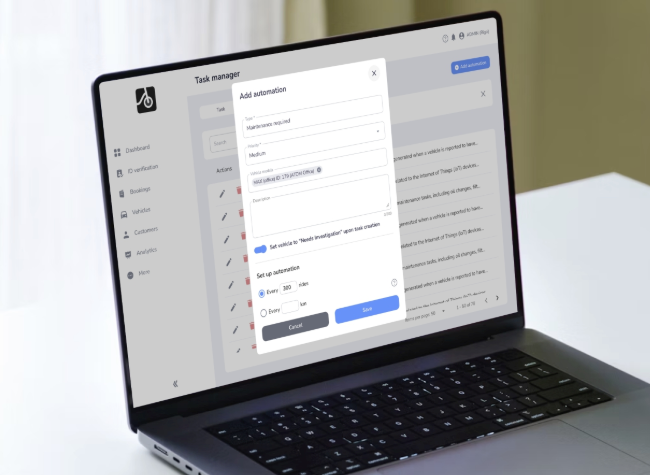Insights and news from the ATOM Mobility team
We started our blog to share free valuable information about the mobility industry: inspirational stories, financial analysis, marketing ideas, practical tips, new feature announcements and more.
We started our blog to share free valuable information about the mobility industry: inspirational stories, financial analysis, marketing ideas, practical tips, new feature announcements and more.

🚀📱2025 was all about automating more and reducing friction across mobility. ATOM Mobility introduced OpenAPI, new sign-in flows, a rental web-booker, smarter fleet automation, and a wide range of new hardware and payment integrations. A faster, more flexible, more scalable mobility platform - built for operators who want to grow.
2025 has been a defining year for shared mobility, digital rentals, and ride-hailing. Competition is stronger, operational costs are rising, and users expect instant, reliable digital experiences. Operators who succeed are the ones who automate more, reduce friction, and stay flexible with hardware, payments, and integrations.
This year, ATOM Mobility shipped a series of features designed to help operators achieve exactly that:
grow revenue, reduce costs, improve fleet quality, and scale into new markets with less complexity.
Here are the 10 most impactful (out of more than 70) features ATOM Mobility released in 2025, and why they matter.

The launch of ATOM’s OpenAPI marks a major step forward for operators seeking greater flexibility, automation, and integration possibilities.
What it is
A fully documented API layer allowing operators and partners to build custom flows, integrations, booking systems, analytics dashboards, or MaaS connections on top of ATOM Mobility.
Who it helps
All verticals: micromobility, car-sharing, moped sharing, rentals, ride-hail, and enterprise partners.
How it works
OpenAPI enables third-party developers to build on top of the ATOM Mobility infrastructure, allowing seamless integrations with external apps, internal tools, and automated workflows. With OpenAPI, operators can extend their service in almost any direction: a partner app (like FreeNow or Uber) can show your vehicles, unlock them, and process payments on your behalf; or internal systems can trigger automated actions - such as sending a survey email after every completed ride. The possibilities are nearly unlimited, giving operators full flexibility to innovate and scale however they choose.
Why it matters
- Enables deeper integrations with partners and local platforms
- Supports custom business logic and automations
- Makes it easier to enter new markets with local-specific requirements
- Opens the door to MaaS distribution and enterprise collaborations

Across mobility, the registration flow is often the first point of friction. ATOM Mobility introduced modern authentication options to simplify onboarding.
What it is
One-tap sign-in using Apple ID or Google Account instead of relying solely on SMS verification.
Who it helps
All operators - especially those targeting tourists, or markets with unreliable SMS delivery.
How it works
When creating a new account or logging in, users can choose to log in/register using Apple ID or Google Account - this will allow account creation in just 2 taps.
Why it matters
- Faster user onboarding experience -> happier rider -> more frequent rides
- Fewer SMS-related issues (and lower SMS related costs) and failed verifications
- Reduced support load from login problems

What it is
A customizable slot in the app menu where operators can add up to five external links - websites, ecommerce pages, tour pages, extra FAQ pages, social media, partner offers, etc.
How it works
- Enable in Settings → System preferences → External links
- Add titles + URLs
- Links automaticaly appear in the app under “More”
Value for operators
- A space where you can display any information you consider important for the user
- Supports cross-promotion and partnership campaigns
- Allows communication updates without app releases
- Creates additional monetisation opportunities, such as launching your own e-commerce or merchandise shop

What it is
A form that users must complete before starting a ride - ideal for compliance, reporting, invoicing, or gathering important data.
Who it helps
Operators needing regulatory data, reporting, consent collection, or structured user feedback.
How it works
Create a question (or several) in “Customer form” -> Group questions into a pre-ride form -> Assign a form to specific vehicle models/classes.
Once completed, the customer must answer predefined questions before starting the ride. Their responses appear in both customer and ride exports. For example, you can ask for a personal ID code, legal address, or any other required information.
Value for operators
- Helps meet regulatory or municipal requirements
- Ensures correct invoicing details
- Provides a structured way to capture essential user data
What it is
Automatic payout splitting: driver earnings go to the driver’s payout account, and platform commission goes to the operator - all processed automatically after each ride.
Who it helps
Ride-hail operators using Stripe or Adyen.
How it works
- Operator has a Stripe/Adyen merchant account
- Drivers onboard as payout recipients
- After completed rides, payouts split automatically
- Supports mixed payment methods (cash and non-cash)
Value for operators
- Reduces manual payout work
- Minimises accounting errors
- Improves driver experience through transparency and instant pay out
- Makes scaling easier when the driver base grow
What it is
A tool to override or manually set a vehicle’s GPS position when IoT data is unavailable (no IoT placed on the vehicle at all) or inaccurate.
Who it helps
Operators with underground parking, poor GPS coverage, or long-term rentals without IoT can use this setup. A typical scenario is long-term bike rental without IoT: the user completes ID verification, payment, and booking in the app, then sees the vehicle assigned to a predefined location (station) where it is picked up and later returned. This serves as a workaround for vehicles that do not support IoT or where adding IoT device is too costly.
How it works
Edit vehicle → update “Location” field. The system assumes this as the correct coordinate. Works for individual vehicles or via mass import.
Value for operators
- Avoids user frustration when vehicles appear in the wrong location
- Supports business modesl with fleets operating without IoT devices

What it is
A flexible pricing feature that lets passengers propose their own fare - higher or lower than the system-calculated price, within limits set by the operator. Drivers see the offer instantly and can choose to accept or reject it.
Who it helps
Ride-hailing operators in competitive, price-sensitive, or highly dynamic markets where price shifts demand quickly.
How it works
When requesting a ride, the user selects “Offer your price”. A slider or +/– buttons allow them to adjust the fare within operator-defined boundaries. If the user lowers the price, the app explains that the offer may reduce the chance of driver acceptance.
Drivers see a clear banner showing whether the rider is offering more or less than the standard fare. Drivers can accept or decline based on their preference.
Operators can enable or disable the feature per vehicle class.
Why it matters
- Creates a clear differentiator in markets dominated by fixed-fare competitors
- Helps convert riders who compare multiple apps before booking
- Gives drivers more control over their earnings and decisions, improving transparency and satisfaction
- Supports better ride matching during off-peak hours or less profitable routes
- Allows operators to experiment with more flexible pricing strategies without changing their core fare model

What it is
A lightweight, embeddable booking widget that lets customers reserve a rental vehicle directly from your website - without installing the mobile app first. It’s designed to capture spontaneous bookings, convert website visitors, and unify online and in-app rental experiences.
Who it helps
Car, moped, and bike rental operators, as well as hospitality and tourism partners such as hotels, resorts, coworking spaces, real-estate developers, and travel service providers.
How it works
Every operator receives a branded rental URL: merchantname.atommobility.com/rent
Users select their area, vehicle type, and rental period directly in the widget. Once confirmed and the account created, the booking syncs automatically into the ATOM Mobility dashboard. Customers see a confirmation screen with a QR code to open the booking in the mobile app. Payment, ID verification, and vehicle unlock actions are completed in the ATOM Mobility-powered app before the trip begins.
The widget automatically adapts to the operator’s brand color for a visually seamless integration. In the dashboard, each booking displays its source: App, Web, or Booker - helping operators track where rentals originate.
Why it matters
- Converts first-time users browsing your website into paying customers - without forcing an app install
- Enables plug-and-play rental flows for partners such as hotels, rental desks, cafés, coworking spaces, or tourist spots
- Supports QR-based rental journeys from physical locations
- Reduces friction for users who want a fast, simple booking experience
- Helps operators expand distribution with minimal effort, unlocking new sales channels
- Unifies online and mobile rental flows under a single backend and operational system
Demo: https://app.atommobility.com/rental-widget

What it is
Bad user experiences often happen when several riders encounter the same faulty vehicle. ATOM Mobility now prevents this automatically. Automation rules detect problematic vehicles and instantly set them to “Needs investigation,” hiding them from the user app so the operator can inspect the vehicle before the next rider can take it.
Who it helps
Sharing and rental operators managing medium or large fleets.
How it works
System monitors low ratings, repeated short rides, and user reports. When triggered, it:
- creates a maintenance task
- switches vehicle status
- hides the vehicle from users
Why it matters
- Prevents recurring complaints from the same issue
- Reduces refunds and reputational damage
- Helps maintain a healthier, more reliable fleet
- Automates routine operational checks
What was added
2025 brought a wave of new integrations that give operators more flexibility in choosing hardware, payments, charging, and regulatory tools. What was added:
- Ridemovi IoT
- Wave payment gateway
- Linka smart lock support
- 2Hire IoT
- Kuhmute charging stations
- Eskiz.uz OTP service
- Atmos payment gateway
- Chiron API (regulatory)
- Fitrider charging station
- Azericard payment gateway
Why it matters
- Easier entry into markets with local payment or OTP requirements
- More hardware options for scooters, bikes, e-bikes, and cars
- Better compatibility with charging infrastructure
- Reduced integration time when expanding
- Support for regulatory compliance where required
These ten features represent only a small selection of what we delivered this year. In total, our team shipped more than 70 new features, dozens of integrations, and countless small improvements that quietly make the platform faster, more stable, and more enjoyable for operators and end-users every single day. Behind each release is a team focused on one idea: helping entrepreneurs build stronger, more efficient, and more profitable mobility businesses.
And we’re just getting started.
Our 2026 tech pipeline is already packed with ambitious and exciting solutions - from deeper AI-powered automation to smarter fleet intelligence and new tools that will change how operators run mobility services. We're looking forward to pushing the industry even further together.

“It is a rapidly growing global phenomenon: bikes of different breeds zipping through cities, being picked up and deposited at will. They belong to companies, not members of the public. The future of cycling could be sharing, not owning one,” wrote The Bike Europe, source of industry news, data, and analysis for the e-bike and bicycle industry’s decision-makers, at the start of this year. And the pandemic hasn't changed the situation significantly.
“It is a rapidly growing global phenomenon: bikes of different breeds zipping through cities, being picked up and deposited at will. They belong to companies, not members of the public. The future of cycling could be sharing, not owning one,” wrote The Bike Europe, source of industry news, data, and analysis for the e-bike and bicycle industry’s decision-makers, at the start of this year. And the pandemic hasn't changed the situation significantly.
According to a recent eight nation survey Oliver Wyman conducted with approximately 6,000 respondents, 44% of riders said they would be willing to increase their dependence on the service (shared vehicles and ride-hailing) in the future. 34% said they planned to use it as much as before the pandemic.
Accordingly, there is a pretty big interest in starting a business based on a bike-sharing service. Every business should start with a detailed business plan. Here, we are going to explain how to create a business plan that it would be appropriate to implement in your business.
If you are a newcomer or even if you have ride-sharing business experience, the first thing to remember before preparing a business plan - every vehicle sharing model is specific and has its own differences to keep in mind.
In regard to bikes, it is important to remember that users are usually willing to take the bike from one docking station and return it to another. Sometimes, it is located on the other side of the city. So the service provider should calculate capacity, as well as vehicle availability in the most popular parts of the city during rush hours. That might be crucial.
Before taking further steps and making any decision you must know your audience. So it is the right time to do market research. The first thing to do is to define the characteristics of your customer by identifying:
Usually, several groups can be identified according to these characteristics. The next step is to find people that are representing each group, talk to them and test your hypothesis and assumptions towards them.
You can also calculate quite precisely the size of your target market. You can find it out by calculating the TAM, SAM, and SOM. TAM is the total available market for the service, for example, the total amount of users. SAM is a serviceable available market in the area you have chosen to operate. SOM is a serviceable obtainable market - a portion of the available market that you are willing to serve.
After you have defined your target market and potential audience, you may start to consider what works best for your customer. There are three options to choose your bike-sharing business from and to put into your bike-sharing business plan:
To sum it all up, the dockless bike-sharing model is more convenient for users but involves higher risks for service providers. Station-based bike-sharing is less risky for the service provider, but not as convenient for the end-user. So while making the bike-sharing business plan, the choice should be made depending on the other market players and the risks you are willing to take. And if you have a corporate partner, who is willing to buy bikes and you have to operate the fleet - do it, but remember that you can be left alone at some point.
The most important part of the business plan is to find a balance between revenue and costs. If you haven't had a ride-sharing business previously, you would be wise to understand and consider all costs that you will have to cover with your revenue stream. Here are the most important positions you have to think of:
You should consider making a total investment of EUR 15,000-30,000 to launch a small test bike-sharing fleet (30-50 bikes). For a proper full-scale and successful launch with several hundreds of bikes, you will need a total investment of EUR 70,000-100,000.
Your business model is the way you will get revenues from your service. A lot of different business models exist in the bike-sharing market. When you think of yours, take a look at what your competitors are doing and think of ways how you can be more attractive to customers. In addition, you have to consider location and take seasonality into account. And one more thing - act fast! This can be crucial for your future success. ATOM allows you to launch your bike-sharing business within a few weeks with a bike sharing software. Learn more about ATOM's solution for shared mobility.

After analysing thousands of rides and hundreds of feature recommendations, we are excited to launch brand new ATOM Mobility dashboard that will help you manage shared micro-mobility services even more successfully. We listened to customer requests and also evaluated trends in order to enrich the new dashboard with more functionalities and richer capabilities.
After analysing thousands of rides and hundreds of feature recommendations, we are excited to launch brand new ATOM Mobility dashboard that will help you manage shared micro-mobility services even more successfully. We listened to customer requests and also evaluated trends in order to enrich the new dashboard with more functionalities and richer capabilities.
With a new updated design, technological superpower and data centric approach you will not regret the minutes you spend working in the new dashboard. Plus, it works super fast, too 🚀
The dashboard includes some structural changes but more importantly, we have added:
✅ More layers to Rides, Vehicles and Customers to help you drill down to an individual level and track every activity happened to particular ride, vehicle or customer at every moment. For example, track when ride was paused and for how long and did the vehicle entered no-go zone during the ride;
✅ Comments. Leave comment for each vehicle or customer if needed so your team keep track record of everything that need to be done with the vehicle;
✅ Activity tracker. Track which commands, by whom and why are send to particular vehicle;
✅ Additional filters. You will find options to filter vehicles by vehicle models, statuses, battery, IoT signal and last ride within a given amount of hours. Mix and match these as you please. These are intended to quickly locate problematic vehicles and also get a good picture of your operations;
✅ More user roles. To help you find business partners and effectively manage existing employees, we have launched new user roles in the dashboard. Choose from 10 different roles with various access levels to your operations, statistics, and confidential information.
💡 Clever insights. In addition, we are now also showing insights regarding average customer satisfaction with your service, rebalancing of vehicles not in use, and problems with IoT signals. This information combined with heatmaps will surely set you ahead of the game as you will have the necessary data to optimize your operations.
If you have any questions regarding the new dashboard or would like to start using our platform, contact us. Chose ATOM Mobility as your partner in the upcoming summer season and stay ahead of competition.

Following the global trend of subscription based businesses and popularity of subscriptions in the micro-mobility space, ATOM Mobility introduces a new product - Subscriptions. Last summer Lime expanded its scooter subscription service LimePass to include daily and monthly passes. A monthly pass with five rides a day would cost around $16.99 and 10 rides a day for $29.99. It was only the beginning of a trend as other operators like Voi and Helbiz also launched their subscription offering and in some countries this type of offer is getting good traction.
Following the global trend of subscription based businesses and popularity of subscriptions in the micro-mobility space, ATOM Mobility introduces a new product - Subscriptions. Last summer Lime expanded its scooter subscription service LimePass to include daily and monthly passes. A monthly pass with five rides a day would cost around $16.99 and 10 rides a day for $29.99. It was only the beginning of a trend as other operators like Voi and Helbiz also launched their subscription offering and in some countries this type of offer is getting good traction.
Subscription offering is not stopping there with subscription based car rentals getting more popularity. Companies like Audi (Audi Select), Lexus (Lexus Complete Subscription), Porsche (Drive) and Sixt (Sixt+) are offering access to vehicles on a monthly subscription basis. This trend opens a completely new market for startups such as Borrow and Revolve. These companies are offering flexibility in choosing the car for a flat monthly fee with no long-term commitments.
Following this technological change in the market, ATOM Mobility is happy to support different types of businesses - does not matter if a subscription is just a nice-to-have feature in your vehicle sharing business or the whole business model relies on subscriptions only.
Now you can offer unlimited access to vehicles that users can rent using subscriptions. Popular subscription types include daily, weekly, and monthly passes. Set daily limits such as unlocks, ride minutes, pause minutes, and ride distance that are included in the subscriptions. Set an appealing price and watch your users benefit from this offer! You can create various types of subscriptions, launch them at any time and see statistics regarding the purchases and usage of the subscriptions, all from one place - ATOM dashboard.
First, ATOM Mobility launched the subscriptions feature in December 2020 adding significant improvements in January and February and planning to add even more features to this product in the future.
Interested to learn more about our subscription offering? Reach out to our sales team.
About ATOM Mobility
ATOM Mobility provides reliable and proven white label technology helping companies to launch and scale shared mobility platforms. Now serving customers in over 20 countries worldwide.

With the growing number of shared scooters, bikes, mopeds and cars on our street, fraud-prevention and ID verification problems become highly important. Recently, several European cities required local operators to verify user identity even for shared kick-scooters. This may be a hard and time-consuming process, but not with Veriff.
With the growing number of shared scooters, bikes, mopeds and cars on our street, fraud-prevention and ID verification problems become highly important. Recently, several European cities required local operators to verify user identity even for shared kick-scooters. This may be a hard and time-consuming process, but not with Veriff.
In order to verify users’ identity and check that they have the necessary documents to enjoy shared mobility services, we have speed up the verification process by choosing automatic document reviews done by our partner Veriff.
Veriff's API enables ATOM Mobility to integrate verification processes directly to mobile apps making the process as smooth as possible for the rider. It takes less than 2 minutes for the Veriff to automatically verify the document.
How to add Veriff to your shared mobility app?
Super easy! Just open an account with them and let us know you would like to add verification to your app. Your users will be asked to verify their documents such as ID, passport, driver’s license before taking their first ride. You can choose which type of documents has to be submitted. The process is straightforward and you will not have to worry about anything. Users will submit photos of their documents and Veriff will do the rest notifying your clients of the verification process and outcome.
About Veriff
Veriff is building the infrastructure for trust online, they allow any website and mobile application to match a person with their government-issued ID. With the help of artificial intelligence, Veriff analyses thousands of technological and behavioral variables in seconds, verifying people from 190+ countries.
About ATOM Mobility
ATOM Mobility provides reliable and proven white label technology helping companies to launch and scale shared mobility platforms. Now serving customers in over 18 countries worldwide.